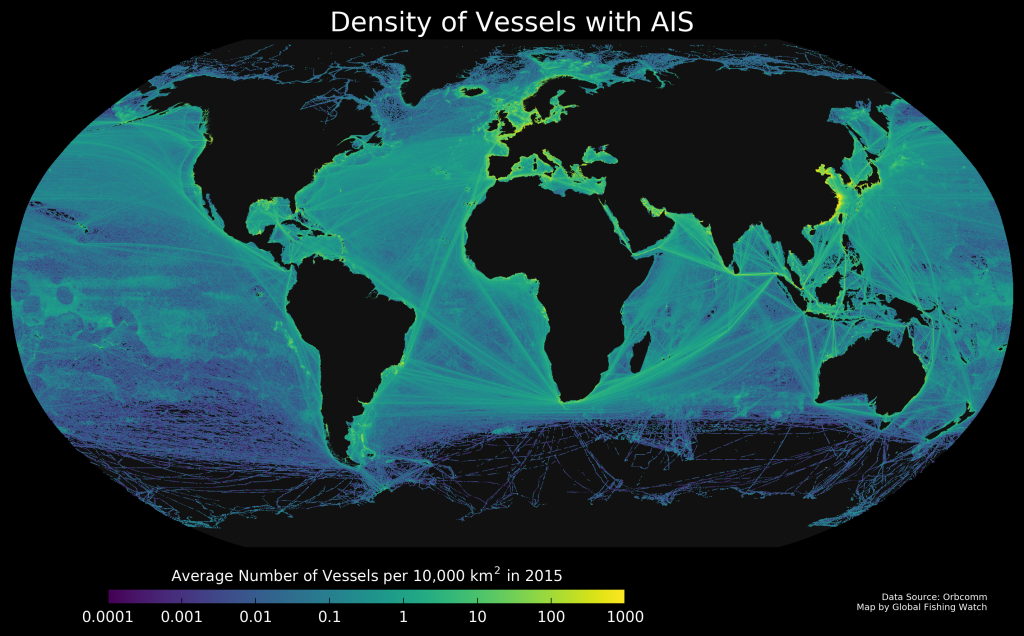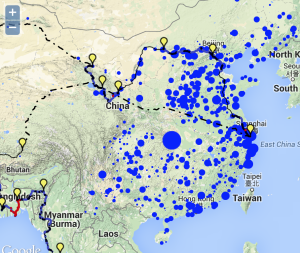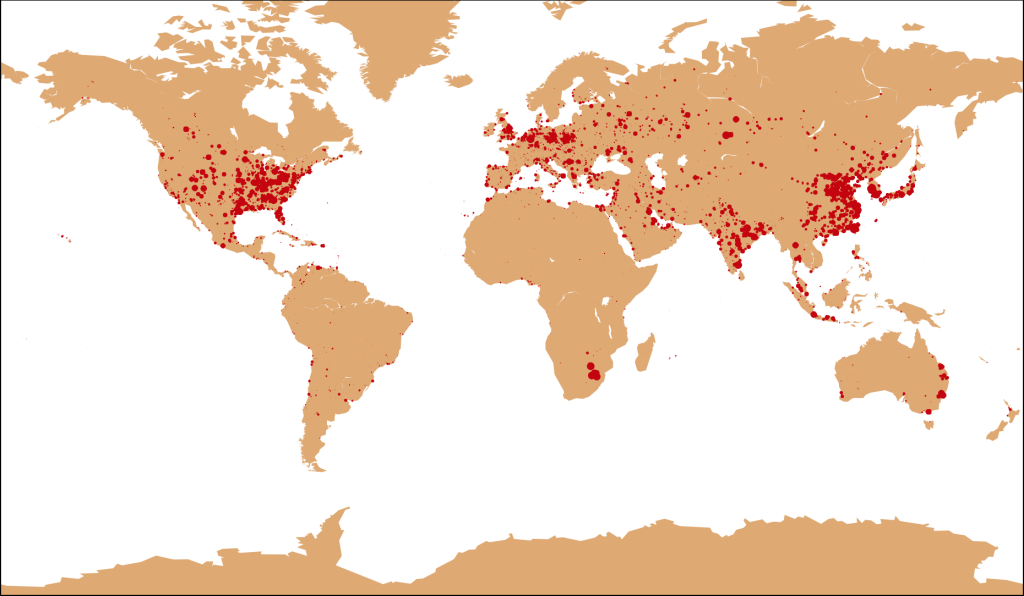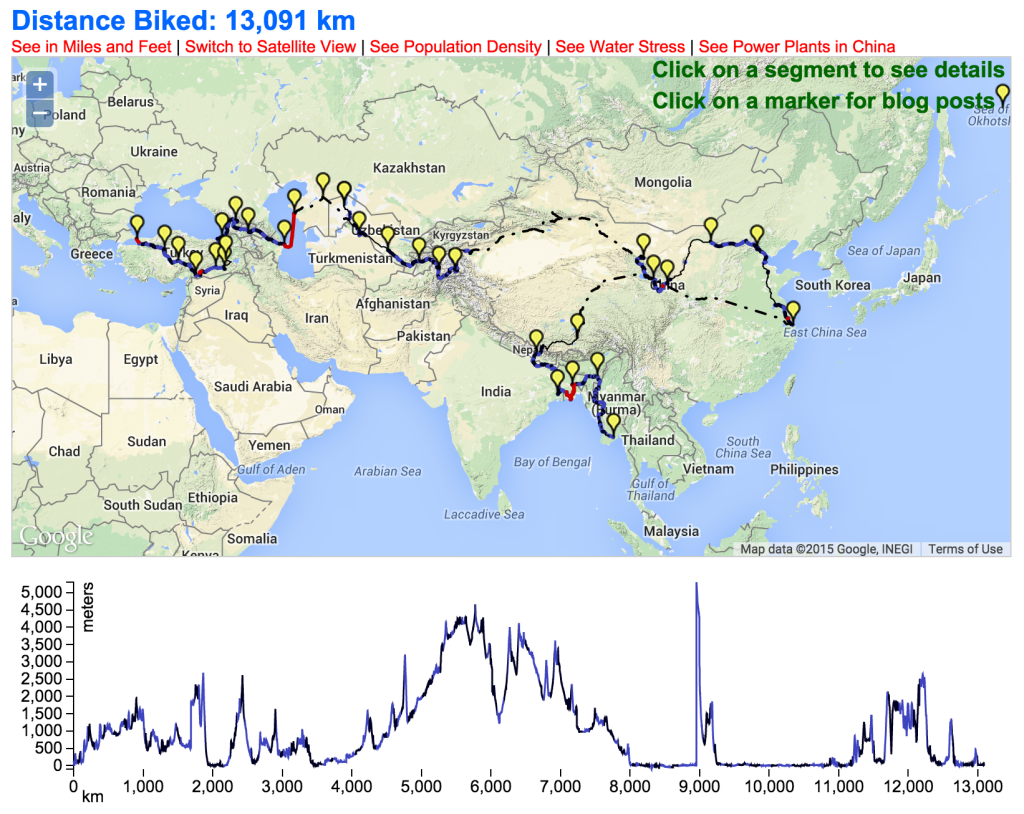Recent headlines told a dramatic story. By the end of May, California’s snowpack was “zero percent of normal,” and another paper reported “California Snowpack Survey Canceled” due to a lack of snow. I knew it had been a bad snow year, and that the Sierra Nevada usually has some skiable slopes into June and July. But zero percent of normal? What does that mean? How much snow is there usually?
To answer this question, I used a computer model provided by NOAA’s National Operational Hydrological Remote Sensing Center — the Snow Data Assimilation System (SNODAS), which takes weather data and combines it with satellite observations to develop a detailed estimate for how much snow is on the ground everywhere in the country, every day of the year.
The model isn’t perfect. It’s only available for the past 12 winters, and the SNODAS website cautions against using the model to estimate snowfall from specific storms. Moreover, according to Dr. Jeff Dozier, a University of California Santa Barbara professor who researches snow, the model can underestimate snowpack in higher elevations by as much as 20 percent. Nonetheless, he and other researchers I spoke with agreed it was good enough for a statewide estimate of snowpack.
With these caveats in mind, I used the model data to calculate the amount of snow on the ground in California each day for the past twelve years. The results are striking but not too surprising. The winter of 2010-2011 was awesome. The past two have been horrible.
The y axes is measured in “acre-feet” – an acre-foot is the amount of water needed to flood one acre of land in one foot of water, and this graph shows the volume of water we’d have if you melted all of the mountains’ snow on any given day. At the end of March in 2011, there was more than 37 million acre-feet of snow in the mountains – enough liquid to flood all of LA county in 12 feet of water. This year, at the end of March, there was only about one million acre-feet – less than one 30th the amount of snow as 2011.
Snowpack serves a vital function for California’s water supply. The vast majority of California’s precipitation falls as rain and snow in the winter months. The rain fills the reservoir, while the snow accumulates in the mountains, effectively acting as another reservoir. In the spring and summer months, this snowpack gradually releases the water to the rest of California.
How does the water in snowpack compare to our reservoirs? To answer this, I downloaded daily water levels of California’s major reservoirs (I did this with a small team at a water-focused hack-a-thon). Below is a graph of 39 reservoirs, representing more than 95 percent of California’s total reservoir capacity. (Each shade of blue is a different reservoir — roll your mouse over the chart to see the names of each reservoir.)
Each winter and spring, the reservoirs fill because of rain and snowmelt. And then each summer and fall they are drawn down to provide water for our cities and farms. But in successive years of drought, the reservoirs don’t fill, and you can see that we’re currently on a downward sloping staircase. This year we have less than half as much water as we did in 2011.
Combining snowpack and reservoirs gives us a sense of the total water we have “stored” at any given time.
The result is a bit scary. The total water stored in our reservoirs and snowpack peaked at nearly 60 million acre-feet at the end of March in 2011. Currently, it’s less than 10 million.
In a good year, the snowpack stores as much water as all of California’s reservoirs combined. You can also see how melting snow fills the reservoirs every year — in most years, the reservoir levels climb as snowpack decreases in the spring. In a normal year, melting snow fills our man-made lakes until the beginning summer. In 2011, the reservoir levels kept rising until July. This year, there was almost no snow and we have none of that water. Reservoir levels peaked at the end of March and have been declining ever since.
These charts tell only a part of California’s water story. A significant amount of southern California’s water comes from the Colorado River, which is fed by rain and snow falling many thousands of miles away. Also, the state obtains a much of its water from groundwater, with groundwater accounting for the majority in drier years. This groundwater is “mined” — that is, it’s being used faster than it’s being replenished. Stanford’sWater in the West, a collaboration between the Woods Institute for the Environment and the Bill Lane Center for the American West, has a series of excellent articles and infographics on just how fast we are depleting our groundwater.
It’s possible that a few years of good rain and snow could replenish our water supplies, much as happened between 2008 and 2011. And it’s possible that an El Niño this year could give us another year like 2011 (but that could bring its own problems). Regardless, we’ll likely need a few years of above average precipitation to refill our state’s water storage.






